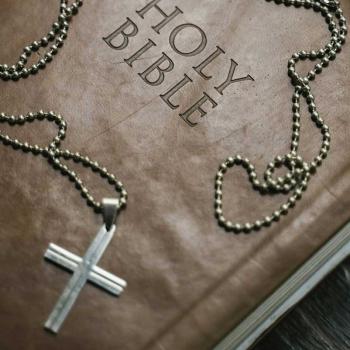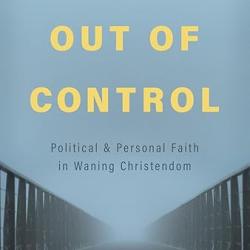Denomination of the Week: Brethren in Christ Church
Quiz question: In what small Anabaptist denomination was President Dwight Eisenhower raised? Answer: the Brethren in Christ Church.
Although I will deviate from this sometimes, I prefer here to highlight as “denominations of the week” groups with which I have had some “close encounter.” Earlier this year (2015) I was invited to speak at Messiah College. The event, held on that campus, was the annual Study Conference hosted by the Sider Institute and attended mostly by members, pastors and leaders of the Brethren in Christ Church which sponsors Messiah College. The Sider Institute is located there. Its whole name is The Sider Institute for Anabaptist, Pietist and Wesleyan Studies. Its director, who invited me to speak about the future of denominations, is Devin Manzullo-Thomas.
I have known of the Brethren in Christ Church for many years, but this was my first “close encounter” with it. Over the years I have had colleagues—especially at Bethel College in Minnesota (now Bethel University)—who previously taught or served as administrators at Messiah College. It was mainly through them that I came to know about the Brethren in Christ Church (henceforth here “BIC-C”).
The BIC-C is unique in bringing together in one denomination equally three historical-theological “streams”: Pietism, Anabaptism, and Wesleyanism. That means the denomination’s historical stance with regard to election-predestination and free will is distinctly Arminian. The BIC-C is a “peace church” like Mennonites and others in the Anabaptist tradition. Their historical stance with regard to deadly violence and war is pacifism. They are Wesleyan in emphasizing sanctification and holy living—separated from worldliness. They are Pietist in believing in the necessity of conversion (repentance and faith as personal decision) for authentic Christian existence and in emphasizing a life of “conversional piety”—“having a personal relationship with Jesus Christ.” While they do not eschew orthodoxy, “orthopathy” and “orthopraxy” are equally, if not more, important.
The BIC-C has about twenty thousand members in the U.S. and more in Canada which has its own, separate organization. The Church has numerous “overseas missionary” endeavors and cooperates with the Mennonite Central Committee on many projects. In fact, I was informed, the BIC-C always has a member on the MCC’s board of directors.
The BIC-C practices “trine immersion” as its mode of believer baptism. Believers, those who knowingly confess Jesus Christ as Savior and Lord and who have experienced conversion, are baptized three times by immersion—once in the name of the Father, again in the name of the Son, and third time in the name of the Holy Spirit. However, most, if not all, BIC churches will accept other believer baptisms as valid for membership.
The denomination is headquartered in Grantham, Pennsylvania near its historic center—the Susquehanna River Valley. The BIC-C’s spiritual ancestors were Mennonites in and around that area who were inspired by the spiritual awakening led by Philip Otterbein and Martin Boehm in the 1760s. These Mennonites (and others) adopted trine immersion and were called “River Brethren.” The BIC-C descends from a group of River Brethren who formed a denomination or network in 1863 and legally incorporated in 1904.
The BIC-C is a member denomination of the National Association of Evangelicals. Messiah College is perhaps its best-known related organization. Its polity is semi-episcopal with congregational and presbyterian elements (so eclectic). It has leaders called bishops who serve as overeers over regions of congregations. The national director is a kind of coordinator for the bishops and the congregations they lead.
Now to my personal impressions. I not only spoke at the Study Conference but also listened to BIC-C pastors and leaders who spoke. One panel discussion about the denomination included an African-American pastor, a woman leader, and three (?) Caucasion male leaders. (Point: the BIC-C strives to be diverse. It ordains women to the gospel ministry and strives to be multi-ethnic and multicultural.) I picked up on notes of concern by denominational leaders and some pastors attending the Study Conference that the denomination may be straying from its historical-theological roots into a kind of “generic evangelicalism.” (I hear this everywhere I go—from leaders of evangelical denominations and churches.) Apparently some BIC churches are not adhering to perceived historical-theological distinctives. For example, a few BIC churches have held “God and Country” worship services near July 4 with military overtones. Military recruiters were allowed to recruit on Messiah’s campus. “Americanism” is the underlying concern. Not so much patriotism, but nationalism and involvement with the military and war are the concerns. Also, I discerned, Reformed theology has begun to creep into the denomination—as everywhere especially among evangelicals. BIC-C leaders are unsure about how best to respond to some of these gradual changes in its ethos around the edges.
I celebrate the BIC-C. I’m not a pacifist, but I do admire pacifism. We need pacifist voices in American Christianity. (Even Reinhold Niebuhr said as much!) I admire simple living and separation from worldliness. I admire devout spirituality that emphasizes transformation of “the inner man” (Pietism) and, of course, Arminianism. The BIC-C brings all these notes together in one “trio,” so to speak.
Back to Dwight Eisenhower. Well, apparently his childhood among the Brethren in Christ didn’t quite “stick” in terms of pacifism—obviously. One can hope and even believe, however, that his integrity as politician and president was partly due to that influence early in his life.












